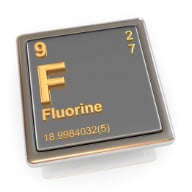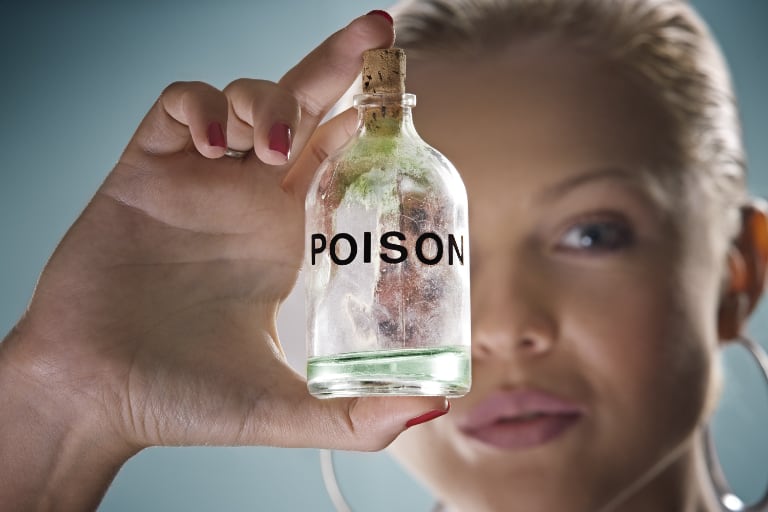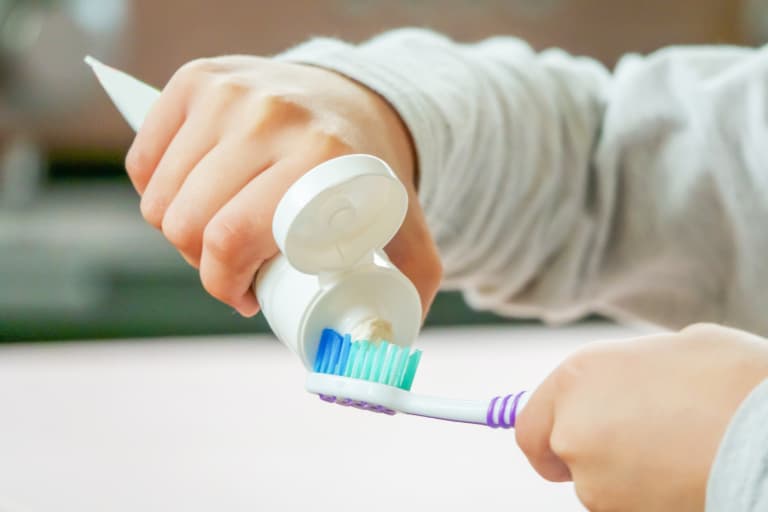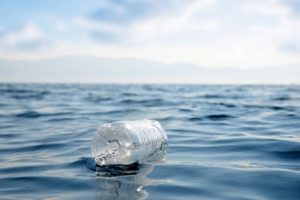Fluoride has been added to drinking water since the early 1940s in many countries around the world, but what do we know about this mineral and how ingesting it affects us? According to the FDA and CDC, fluoridation of municipal drinking water helps to prevent tooth decay, but does that mean it is necessary to drink it? New scientific studies provide evidence that repeated exposure to drinking water containing fluoride in small to medium amounts produces a host of harmful health concerns. The studies raise the question of how safe it is to drink fluoridated tap water and who would be the most at risk for any adverse health issues. And just what is fluoride anyway, and what do we know about it?
What Is Fluoride, And Why Is It Added To Tap Water?

Fluoride is a mineral found on the periodic table occurring naturally in soil, plants, rock, food, salt, and freshwater. It is produced when the element fluorine bonds with another element. Fluoride is also found naturally in humans and animals, with the highest concentrations in the teeth and bones.
Fluoride is an important industrial chemical used mainly for producing aluminum, steel, and Teflon (considered a PFAS or forever chemical. More industrial uses include making glass, tanning leather, as a cleaning agent, and also used in pesticides. It is also used in certain medications and medical imaging, such as PET scans.
One of the most recognized ways fluoride is used is to improve dental health. Many over-the-counter products contain fluorides, such as supplements, mouth rinses, and toothpaste. Several countries add fluoride to the water supply stating that it helps prevent dental caries (cavities), may decrease oral bacterial growth, and prevent tooth decay.
The United States first began the fluoridation of municipal water in 1945 in Grand Rapids, Michigan. Based on studies, cities with high fluoride levels in the water showed decreased dental cavities, especially in children. It was also in 1945 when Brantford, Ontario, became the first Canadian city to jump on the fluoridation bandwagon. In 2009, it was estimated that 45% of Canadians received fluoride in their tap water, making Canada one of the most fluoridated countries worldwide. Canada has not mandated fluoridation, and it is up to each province to decide whether to fluoridate. This is also the case in the United States, where each state mandates fluoridation; it is estimated that over 70% of the population has fluoride in their municipal drinking water.
Most European countries have banned or stopped adding fluoride to their water supplies. There has been much controversy over mandatory fluoridation. Residents want the right to untainted drinking water with the availability of milk, salt, toothpaste, and supplements containing added fluoride. Also, some city drinking water sources have high fluoride levels, which occur naturally, making fluoridation unnecessary.
Why The Opposition To Fluoride in Drinking Water?

Critics opposing fluoridation argue that only topical fluoride applications are needed; ingesting it is unnecessary to improve oral health. Swallowing fluoride takes it from topical to systemic, increasing unwanted or harmful side effects. Repeated ingestion of fluoride poses more risk to infants than any health benefit. For example, infants fed only formula made solely from fluoridated water will receive up to 300 times more fluoride exposure than from the mother’s breast milk. In adults, only 50-60% of the fluoride gets excreted, while infants and young children absorb up to 80% into their bones, which may accumulate in the brain.
For years this chemical element has been touted as the way to achieve exceptional oral health, but is that really the case? There have been many older studies that show fluoridation may help prevent dental cavities. Still, current investigations and studies present new evidence that repeated exposure and fluoride ingestion produce adverse health effects.
The Harmful Health Effects of Fluoride In Drinking Water

The Environmental Working Group (EWG) lists fluoride in its U.S. Tap Water Database as a chemical that causes harmful health concerns with even small amounts of long-term exposure through ingestion. It highlights the fact that topical (explicitly applied to the mouth) fluoride may be helpful for good oral health, but ingesting or drinking fluoridated water produces adverse health. It lists harm to bones, teeth, and bone cancer as some of the studied harmful effects. Further studies show that excess fluoride ingestion may alter childhood brain development and thyroid function and cause arthritis and kidney disease.
EWG also reported on two extensive studies, one in Mexico and the other at the Harvard T.H. Chan School of Public Health, which show evidence that exposure to high levels of fluoride causes harm to the development of children’s nervous systems and their brain development. Some studies link high fluoride levels to cognition, memory, and learning deficits. Also, The National Institute of Sciences reported findings of lower IQ scores and harm to teeth and bones. Another study shows a link between increased fluoride ingestion and bone cancer.
High fluoride levels can be dangerous to health, causing fluorosis to the teeth and bones. Fluorosis in teeth changes the outer enamel coating causing staining, white spots, and pitting on the teeth. Fluorosis causes excess fluoride to be absorbed and concentrated in the bones, calcifying the ligaments, altering the bone structure, and weakening the skeletal system. Preliminary animal studies show a worrisome picture of the damage to brain and nerve cells and possible links to cancer. There are also substantial concerns in specific vulnerable populations, such as bottle-fed infants and dialysis patients, that they automatically have increased routine exposure to the effects of fluoridated water.
Is introducing fluoride into our bloodstream vital to prevent tooth decay when several highly beneficial topical fluoride options are available such as mouth rinses, supplements, and toothpaste? The 2006 Harvard study and additional animal studies suggest that prolonged exposure to fluoridated drinking water increases the risk of developing bone cancer. The Harvard study observed that young boys drinking fluoridated water during their mid-childhood growth spurt (ages 6-8 years) are at increased risk of developing Osteosarcoma, a highly fatal form of cancer seen primarily in teens. The National Toxicology Program reports that evidence from several studies indicates fluoride is a mutagen. Mutagens cause genetic damage and can cause cancer.
Areas of the body where fluoride accumulates are the oral cavity, the bones, the pineal gland, the bladder, and the kidneys, where damage from the fluoride mutagen begins. The accumulation of fluoride causes calcium loss-making bones dry and brittle, leading to osteoporosis. Higher fluoride levels can also affect or damage the thyroid and parathyroid glands, which produce many vital hormones. The effects of high fluoride exposure reach to cardiovascular issues, reproductive issues, and skin problems.
Fluoride is a toxic substance, and acute exposure to high fluoride levels is considered slightly less poisonous than arsenic but more toxic than lead. Its toxicity is the very reason why fluoride is used in making pesticides and rodenticides for killing insects and rodents. The FDA has even put a poison warning on fluoridated toothpaste, warning users not to swallow or ingest it.
In China and India, there are certain regions where high fluoride levels occur naturally in their drinking water, causing crippling bone diseases in large populations. Fluoride poisoning can result from an acute over-ingestion from fluoridated dental products or water, and can be fatal.

Despite the dangers of fluoridation, the CDC (Center For Disease Control), the WHO (World Health Organization), Health Canada, and several dental associations support fluoridation for use with dental health issues. Interestingly, the United States and Canada have some of the highest rates of fluoridated municipal water worldwide. In Canada, fluoride levels up to 0.7 mg/L are considered acceptable, and in the U.S., the current enforceable standard is set at 4.0mg/L. There is also an EPA secondary non-enforceable limit of 2.0mg/l to protect against pitting or discoloration in young children. The acceptable daily level of fluoride is exceeded by many children using fluoridated toothpaste daily. When fluoride is added to the water supply, it is ingested by everyone, but it is impossible to control the dose each person receives regardless of age, height, or weight.
How to Tell If You Have Fluoride In Your Tap Water
With all the disturbing facts regarding the safety of drinking fluoridated tap water, what can you do to eliminate unnecessary fluoride exposure? First, start by checking your local annual drinking water report and call your municipal water provider to determine fluoride levels and whether fluoride is added to the water supply. The next step would be to have your household drinking water tested by a professional water treatment specialist. If the results come back positive, a system that removes fluoride is essential to provide your home and family with safe, fresh, pure sparkling drinking water.
Removing Fluoride From Your Drinking Water
A Reverse Osmosis Water Filtration System removes fluoride and up to 99% of other contaminants found in tap water, such as other harmful chemicals, bacteria, viruses, and more. A reverse osmosis system removes the fluoride by forcing water through a semipermeable membrane, which does not allow the large fluoride particles and other contaminants through the membrane’s tiny pores. Instead, they are rinsed into the drain. The reverse osmosis system only allows the pure smaller water particles through the semipermeable membrane for fresh, pure drinking water that is safe for your home and family.

Reverse osmosis systems are safe, economical, and easy to install and maintain, making them an increasingly popular choice for families concerned about the safety of their home drinking water. A Reverse Osmosis Water Filtration System is conveniently installed under the kitchen sink and can easily be connected to your refrigerator and ice maker.
A Whole Home Reverse Osmosis System also removes fluoride from your drinking water by providing pure filtered water to each household water tap. The Whole Home System requires more space for installation and must use pre-filtration before water can enter the RO system. It is generally recommended for more complex household water issues.
As new studies emerge, it seems that ingesting fluoride poses more adverse health risks than benefits. To ensure your family is protected, testing your drinking water is vital. If your water contains fluoride, have a professional water treatment specialist advise you on the best quality and most efficient water treatment system to remove the fluoride and other harmful contaminants. The right water treatment system will provide pure, clean, safe drinking water for your home and family.
For more information about Excalibur Reverse Osmosis Systems, please contact us.


